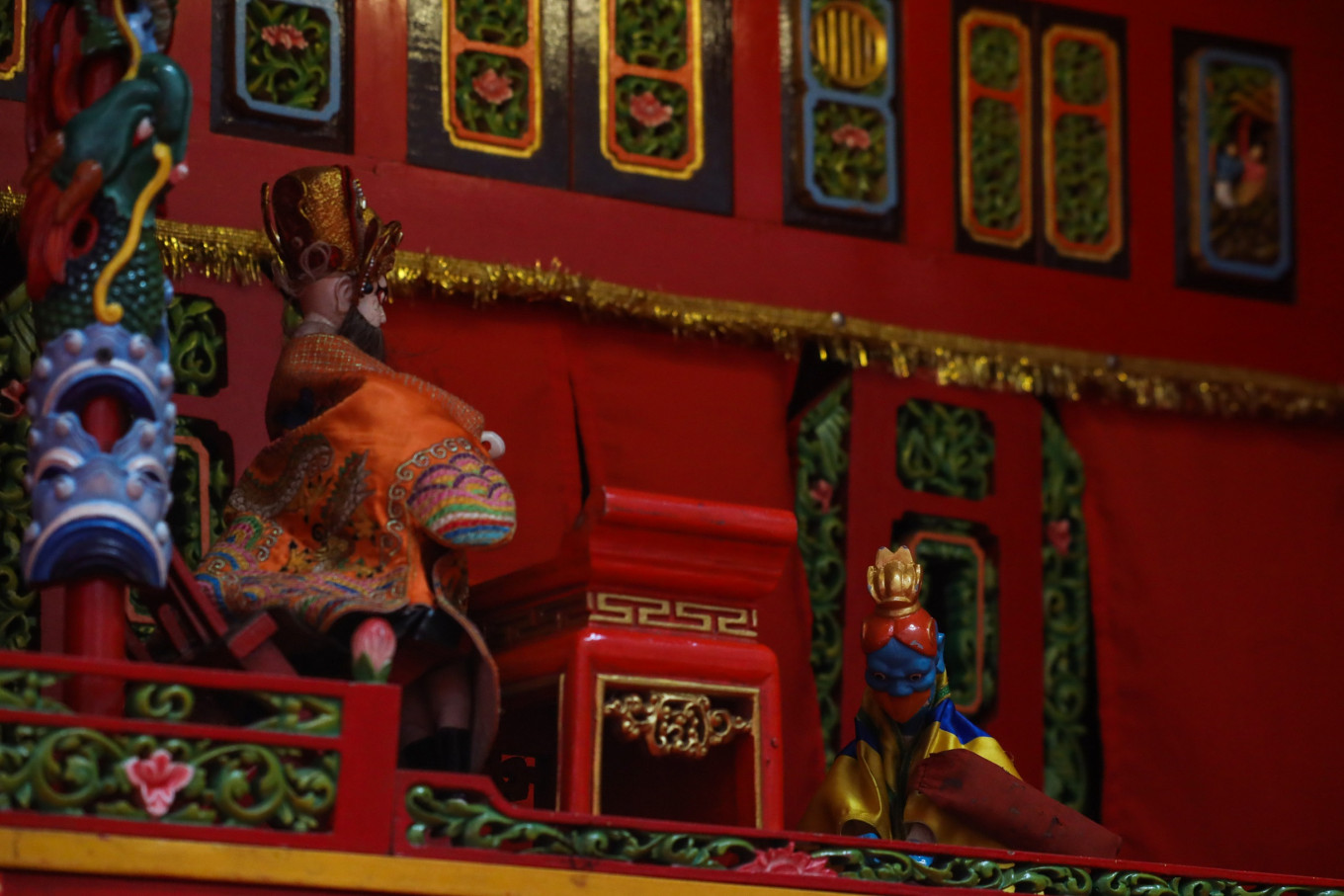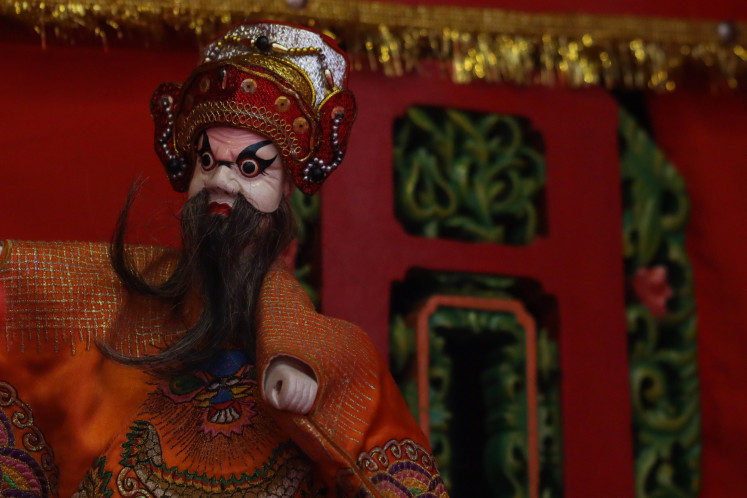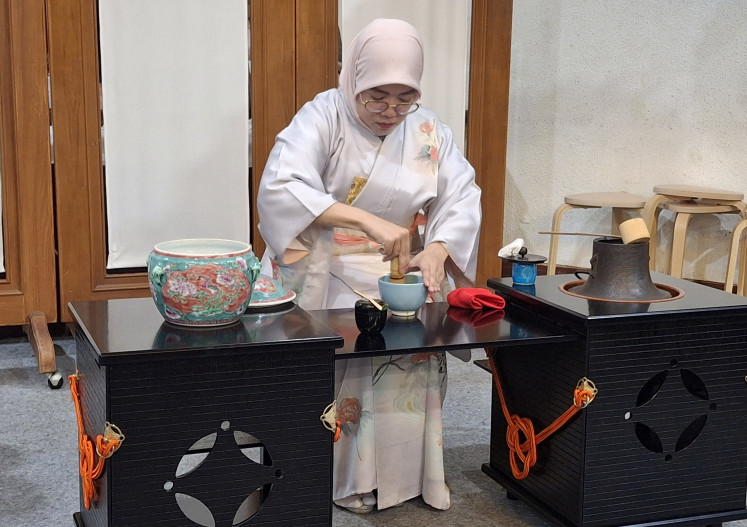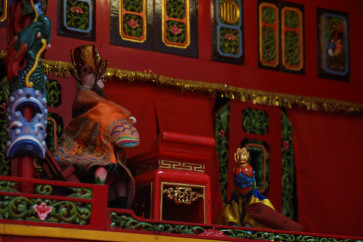Popular Reads
Top Results
Can't find what you're looking for?
View all search resultsPopular Reads
Top Results
Can't find what you're looking for?
View all search resultsWayang 'potehi’: A symbol of the nation’s acculturation
Change text size
Gift Premium Articles
to Anyone
Wayang (Indonesian puppet shows) are widely known throughout the country for being as traditionally Indonesian as it gets.
Indonesia is a melting pot of many cultures and one form of puppet show, wayang potehi (Chinese glove puppetry), has shown how diversity and acculturation have continued to create new cultural treasures.
Unlike traditional leather-made wayang puppets, the cloth puppets of wayang potehi are moved by the dalang’s (puppeteer) gloved hand.
Well crafted: A close up look of a wayang potehi puppet. (JP/Dionnasius Aditya)
Wayang potehi is not as popular as other forms of wayang, being rarely seen outside of temples.
The Jakarta Post recently spoke with Josh Stenberg, a senior lecturer at the University of Sydney’s Department of Chinese Studies who was in town to speak at a discussion on wayang potehi at Salihara.
Stenberg, who focused on wayang potehi for his PhD dissertation at Nanjing University, said that the puppets originated from the Chinese province of Hokkien (Fujian), with the earliest records of them dating back to the 18th century.




















